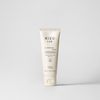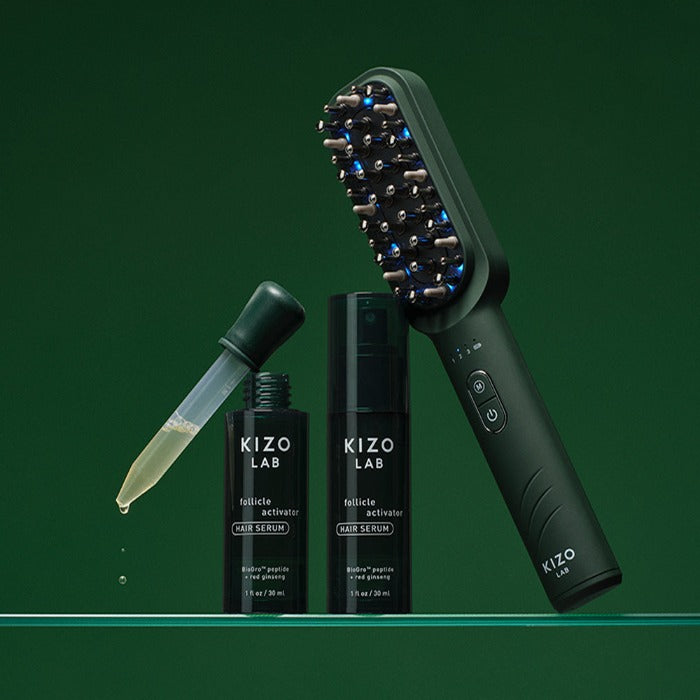
Isn’t it ironic that the sun we depend on for life is the same sun that also has the potential to cause us so much damage? Well, only if we’re not properly protected. Everyone, especially those with hyperpigmentation, should avoid unprotected exposure to the sun because skin is subject to damage from UV rays even on overcast days.
MINERAL VS. CHEMICAL SUNSCREENS
For the best sun protection, how do you choose between all the sunscreens out there? The basic difference comes down to whether it’s a mineral sunscreen or a chemical sunscreen. A mineral sunscreen, which is also known as a “physical” sunscreen, works like a shield. The active ingredients, like zinc oxide and titanium dioxide, sit on top of the skin and refract UV rays to protect the skin. Unfortunately, these actives can cause the sunscreen to be a little heavy, even leaving a whitish cast on the skin.
On the other hand, a chemical sunscreen works like a sponge. The active ingredients are absorbed by skin, which then converts UV rays into heat, and releases them from the body to protect skin. Chemical sunscreens are often the choice of people who prefer clear gel sunscreens that are extremely lightweight, like Kizo Lab UV Defense Clear Sunscreen. The active ingredients in UV Defense Clear Sunscreen are avobenzone, homosalate, octisalate, and octocrylene.
SUNSCREEN SAFETY
It’s important to note that the FDA considers sunscreen to be a drug, so sunscreen undergoes very rigorous safety testing. The percentages of the active ingredients in Kizo Lab UV Defense Clear Sunscreen are within the guidelines deemed safe by the FDA. This sunscreen does not contain oxybenzone or octinoxate, which have been found to enter the bloodstream, and which have also been found to be harmful to coral reefs if the sunscreen is washed off skin when you swim in the ocean.
So, how do you choose between mineral and chemical sunscreens? Easy—find one that you like so you’ll be sure to use it every day. When choosing, take into account the texture you prefer, the ingredients, and the SPF rating.
SUN PROTECTION FACTOR (SPF)
What does sun protection factor, or SPF, actually indicate? First, Sun Protection Factor is the ratio between how long UV rays take to create sunburn on protected skin, compared to unprotected skin. The FDA requires rigorous testing to verify that the SPF value is accurate. SPF ratings consider the amount of time skin is exposed to UV radiation as well as the intensity of UV rays, which are more intense between 10 am and 2 pm.
The amount of UVB rays that skin is protected from increases with SPF. For example, SPF 15 blocks 93% of UVB rays, SPF 30 blocks 97% of UVB rays, SPF 50 blocks 98% of UVB rays, and SPF 100 blocks 99% of UVB rays.
BROAD SPECTRUM
Since UVA rays and UVB rays have a different impact on the skin, what’s the basic difference? An easy way to remember the distinction is to think of the A in UVA as the A in AGING. UVA rays penetrate deeper and damage skin from within, causing skin to age prematurely. UVA rays are also connected to the development of skin cancer. On the other hand, think of the B in UVB as the B in BURN. UVB rays damage the outer layers of skin, cause sunburn, and are also connected to skin cancer.
So, in addition to looking for the SPF number, it’s important to look for a product that’s labeled “broad spectrum,” which will protect skin from UVA rays as well as UVB rays. Even if there is a high SPF number, skin won’t get the best UVA protection possible if the sunscreen is not labeled as broad spectrum. That’s why it’s important to always use a broad spectrum sunscreen, preferably with an SPF of 50 or more, which will protect against UVA and UVB rays.
PA RATING
In addition to SPF and broad spectrum, there’s another important rating for sunscreen—the PA rating. PA stands for “Protection Grade of UVA,” because it measures sunscreen’s ability to block UVA rays. This rating was developed in Japan and was adapted from the “Persistent Pigment Darkening” (PPD) method, which initially was a measure of how long skin takes to undergo “tanning.”
PA+ indicates some UVA protection
PA++ means moderate UVA protection
PA+++ means very high UVA protection
PA++++ extremely high UVA protection (highest rating)
SHIELD UP
Maybe you already know the importance of sunscreen, but you avoid using it because the formula is heavy, greasy, or leaves a white residue. There’s a solution: Kizo Lab UV Defense Clear Sunscreen. This lightweight, quick-drying clear gel sunscreen has broad spectrum SPF 50 and a PA++++ rating, the very highest PA rating possible. Plus, UV Defense Clear Sunscreen is not heavy. Not greasy. And doesn’t leave a white cast on skin. The advanced formulation contains UV-fighting and collagen-boosting peptides, along with vitamin C, vitamin E, moisturizers like glycerin, and anti-inflammatory and protective adaptogens, like haritaki fruit, reishi mushroom, and more. Once you apply it, you activate a type of power shield that keeps damaging ultraviolet rays OUT, and keeps skin-loving moisture IN.












